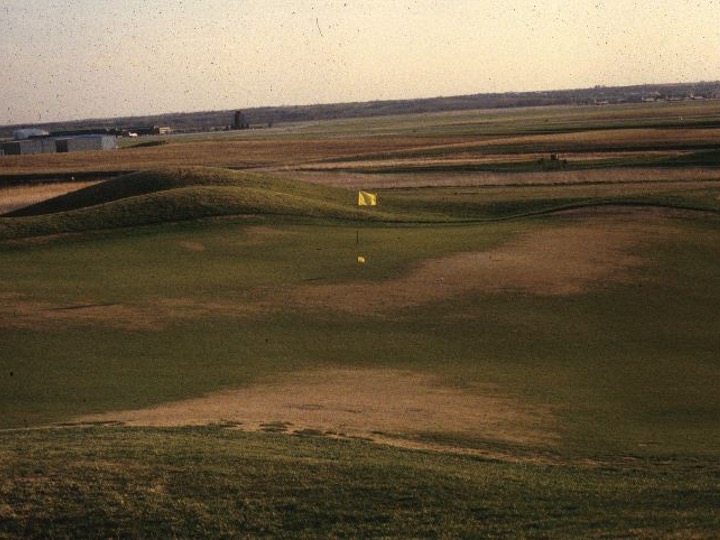
Tuesday, December 6, 2022
Author: Roch Gaussoin, Professor and Extension Specialist
The Northern Great Plains winter weather patterns are much like riding a roller coaster. Single digit nighttime temperatures and 55 degrees or greater daytime temperatures are not uncommon. Wide swings in daytime temperature may have you thinking about shorts one week and long underwear the next. Couple this roller coaster temperature ride with projections of another dry, with minimal snow cover, winter and conditions are less than favorable for foot and vehicle traffic on turfgrass, regardless of the ambient temperature. In an agronomically perfect world, golf rounds or any pedestrian or vehicular traffic would cease before the turfgrass stops growing in late fall. Turfgrass recover from traffic (cart, foot, ball marks, divots etc.) through active regrowth. Winter traffic increases winterkill and decreases surface uniformity. Traffic on wet or partially frozen soil increases compaction. Any turfgrass damaged from winter traffic is difficult to correct in the Spring. Re-establishing turfgrass in spring is difficult because the soil is cold, normally warms slowly, and the weather isn’t ideal for seedling growth and recovery. From an agronomic perspective, winter play should be restricted or banned to maximize turfgrass health and survival. Winter play on the golf course, however, increases revenue during a slow time of the year and could bring new customers when other courses are closed. Winter turfgrass traffic, and in the golf trade, play, is common. Traffic on dry soil that is not frozen is the least likely to suffer significant wear injury. Traffic routing to dissipate the traffic is recommended. On the golf course consider using temporary tees and greens. Locating tee markers at the start of the fairway and the temporary green at the end of the fairway is a standard recommendation. If temporary tees or greens are not an option, disperse traffic and wear patterns. Move tee markers frequently or simple remove them, changing cups relatively frequently and chaining or fencing off concentrated wear areas. Monitor turfgrass and look for developing wear areas, especially if carts are allowed. As the winter continues, frozen soils will result in increasing likelihood of wear injury compared to unfrozen soils, but little soil compaction will occur. Continue to monitor and route traffic as previously described. The conditions which are most problematic to traffic on turfgrass is on thawing soil (unfrozen wet surfaces) with the soil frozen below the surface, which can occur throughout winter in the Northern Great Plains and is more prevalent during the late Winter/early Spring. Both wear and soil compaction can occur. If possible, traffic in this scenario should be avoided, but the decision can change daily. Soils that are frozen in the morning may support traffic but will begin to thaw if temperatures rise during the day. From an agronomic standpoint, winter traffic is not good for turfgrass. The repercussion from minimal growth is little, if any, recovery from traffic or wear. For turfgrass facilities open in winter, set them up to be safe for the end user and to minimize turfgrass damage that is inevitable. Constant monitoring of soil conditions and freeze thaw cycles is critical. Restricting or denying access is not a desired strategy from a PR perspective but will be instrumental in limiting or even eliminating the potential damage from winter traffic.